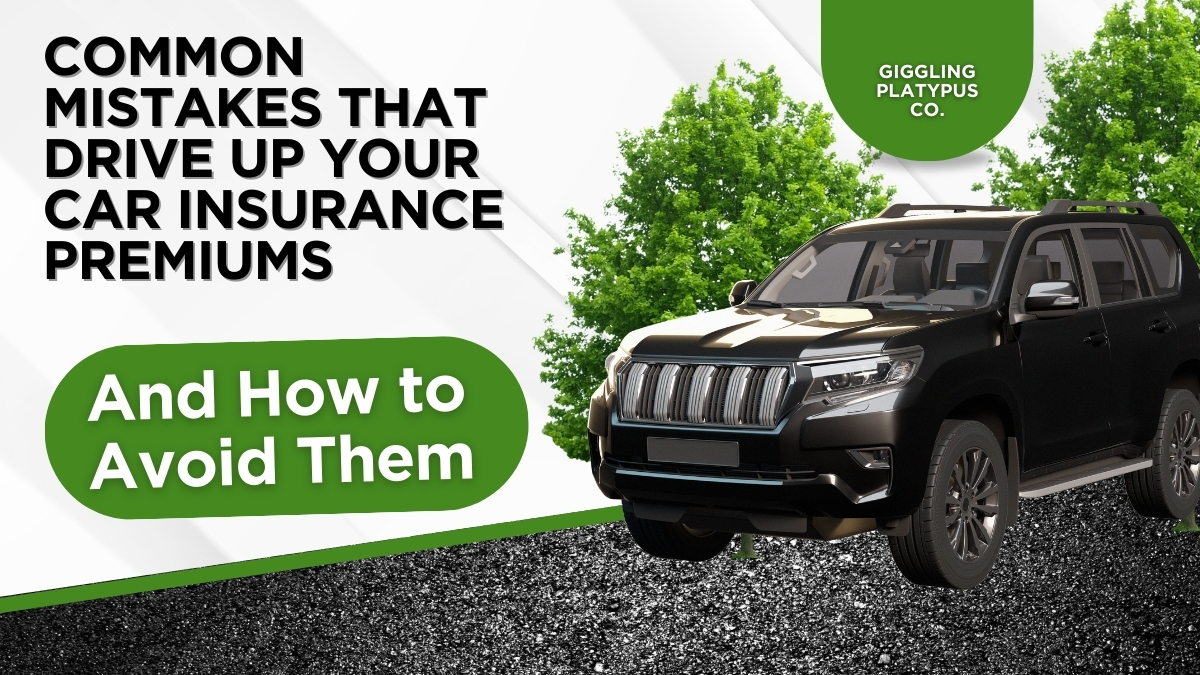Car insurance is a necessary expense for all drivers, but that doesn’t mean it has to be expensive. If you find yourself paying more than you think you should, it could be due to common mistakes that drive up your premiums. In this article, we’ll walk you through some of these errors and offer practical tips on how to avoid them. Whether you’re a seasoned driver or a new one, understanding these pitfalls can help you save money and make smarter insurance choices.
1. Not Shopping Around for the Best Deal
One of the biggest mistakes people make is sticking with the same car insurance provider year after year without exploring other options. Insurance rates change frequently, and different companies may offer varying rates for the same coverage.
How to Avoid It:
- Compare multiple quotes: Use online comparison tools to get quotes from different insurers. Even if you’re happy with your current provider, it’s worth checking to see if you can get a better deal elsewhere.
- Consider independent agents: These agents can help you find the best rates by offering policies from multiple companies, saving you time and effort.
Example:
You’ve been with the same company for years and pay $1,200 annually. After comparing quotes from three other providers, you find a plan that offers the same coverage for $900. That’s a $300 savings simply by shopping around!
2. Providing Inaccurate or Incomplete Information
It may seem like a minor detail, but giving your insurance provider incorrect or incomplete information can cause your premiums to rise. Insurance companies rely on accurate data to assess risk and calculate your premium, so even small mistakes matter.
How to Avoid It:
- Double-check your details: Review all the information you provide to your insurer, such as your car’s make, model, and year. Make sure your address, driving history, and mileage are accurate.
- Update your policy: If you’ve made any changes to your car or personal situation, like moving to a different location or changing jobs, update your insurer immediately to reflect those changes.
Example:
If you list your car as a 2015 model when it’s actually a 2014 model, this small discrepancy can affect your premium calculation. Insurance companies may consider a 2015 model to be newer and more valuable, which could lead to higher rates.
3. Choosing Too Much or Too Little Coverage
It’s easy to overestimate or underestimate how much coverage you need, and either extreme can be costly. Too much coverage means you’re paying for protection you don’t need, while too little coverage leaves you financially vulnerable.
How to Avoid It:
- Assess your needs: Consider factors like your car’s value, your driving habits, and your financial situation. If your car is older and worth less, you might not need comprehensive or collision coverage.
- Understand state requirements: Ensure that you meet your state’s minimum insurance requirements but don’t overspend on unnecessary coverage.
Example:
If you have a car that’s worth $2,000 and you’re paying for collision coverage, you might be wasting money. For a small car worth less than your deductible, it could make more sense to drop that coverage and rely on liability insurance.
4. Neglecting to Take Advantage of Discounts
Insurance companies often offer various discounts, but many drivers don’t take full advantage of them. These discounts could include safe driver discounts, bundling policies, or installing safety features in your car.
How to Avoid It:
- Ask about available discounts: When getting a quote or renewing your policy, ask your insurer about all available discounts. These may include safe driving, low mileage, anti-theft devices, or good student discounts.
- Look for bundle deals: If you have home or renters insurance, consider bundling it with your car insurance to get a multi-policy discount.
Example:
You’re a safe driver with no accidents or claims, but your insurer doesn’t automatically offer you a safe driver discount. By inquiring about this, you could lower your premium by up to 10%.
5. Focusing Only on Price and Ignoring Coverage Limits
While it’s tempting to choose the cheapest insurance option, focusing solely on price can lead to insufficient coverage. If you opt for the lowest premium without considering the limits and exclusions, you may find yourself underinsured in the event of an accident.
How to Avoid It:
- Compare coverage, not just cost: When shopping for insurance, compare the coverage limits and policy details, not just the price. Make sure your policy provides adequate protection for liability, medical coverage, and property damage.
- Increase your deductible: If you’re looking to lower your premium, consider increasing your deductible. Just make sure you can afford the higher out-of-pocket expense if you need to file a claim.
Example:
You choose the cheapest policy available, but it doesn’t cover enough in case of a serious accident. You could end up paying more out of pocket after an accident than if you had invested in better coverage to begin with.
6. Failing to Maintain a Good Credit Score
Many insurance companies use your credit score as a factor in determining your premium. A lower credit score can lead to higher insurance rates because insurers often see poor credit as a risk factor.
How to Avoid It:
- Improve your credit score: If possible, take steps to improve your credit score. This can be done by paying down debts, making payments on time, and correcting any errors on your credit report.
- Check your credit report regularly: Stay on top of your credit score by checking it regularly. A small mistake on your credit report could cause your premium to rise unnecessarily.
Example:
You’ve been paying your bills late, which affects your credit score. As a result, your insurer sees you as a higher risk and raises your premium. By working to improve your credit, you can potentially reduce your insurance rates.
7. Not Updating Your Policy After Life Changes
Your life circumstances may change over time, and so should your insurance policy. If you don’t update your car insurance after significant life events, you could end up paying more than you need to or be underinsured in certain situations.
Best Cheap Car Insurance in the USA: Your Guide to Affordable Coverage
How to Avoid It:
- Notify your insurer about life changes: This includes things like moving to a new address, getting married, purchasing a new car, or switching jobs. These factors can all affect your insurance rate and coverage needs.
- Reassess your policy annually: Even if no major changes have occurred, it’s a good idea to review your policy once a year to ensure it still meets your needs.
Example:
You get married and move in with your spouse, but you forget to update your car insurance. Insurers may offer a discount for married couples, and the move to a new area may affect your premium. Failing to update these changes means missing out on potential savings.
Conclusion: How to Keep Your Car Insurance Costs in Check
Car insurance doesn’t have to break the bank if you avoid these common mistakes. By shopping around for the best rates, providing accurate information, choosing the right coverage, taking advantage of discounts, and maintaining a good credit score, you can keep your premiums as low as possible. Remember to review your policy regularly and stay informed about changes that could affect your rates.
Quick Actionable Tips:
- Always compare insurance quotes before renewing your policy.
- Update your information and review your coverage annually.
- Ask about available discounts, such as bundling or safe driver discounts.
- Maintain a healthy credit score to avoid higher premiums.
By staying proactive, you can ensure that you’re not paying more than necessary for your car insurance. Happy driving and saving!

